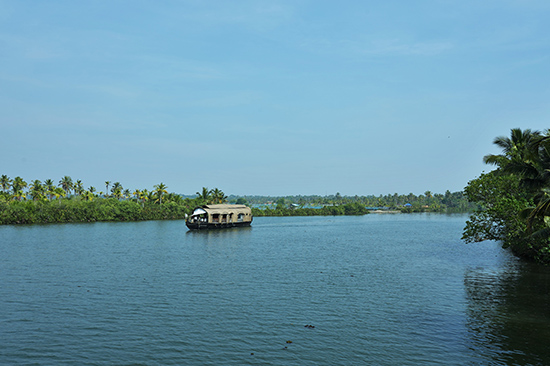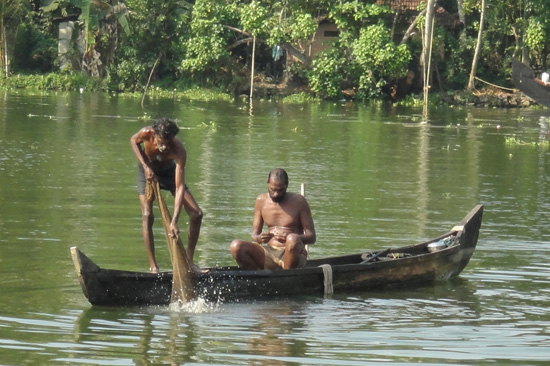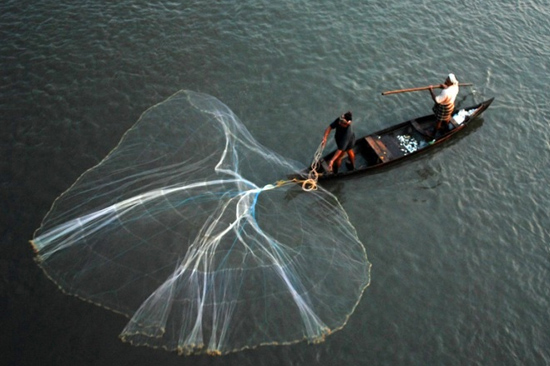PLANTATIONS
Majority of the population in Kerala are dependent directly or indirectly on agriculture for their livelihood. The main crops grown in the state are Coconut, Paddy, Banana, Mango, Jackfruit, Pepper, Cashew, Areca nut, Rubber etc… Kerala is an Agrarian economy. Coconut is the most important crop in Kerala.

Paddy is the other important crop in Kerala, Alleppey is known as ‘The rice bowl of Kerala’, Where green paddy fields are spread interlaced with enchanting backwaters lead us to the unforgettable sights. You can see rice fields in Kuttanad region between Thottappally and Alleppey, QST & R Block regions in Kuttanad are wonders of indigenous agriculture engineering know-hoe of Kerala, Here the cultivation and practiced below sea level.
Banana is one of the common agricultural items in Kerala. Throughout the country one can taste the different variety of Banana. Banana is a part of the daily menu of the people of the state. Mango trees and Jackfruit trees are inevitable components of homesteads of the state. Pepper is commonly cultivated as a secondary crop interspersed with several other crops.
CHINESE FISHING NETS
Chinese fishing nets are fixed land installations for fishing. The more formal name for such nets is "shore operated lift nets". It was earlier thought that the nets might have been introduced by the Chinese explorer Zheng He. Recent research shows that these were introduced by Portuguese Casado settlers from Macau.Normally using night time for fishing. Each installation is operated by a team of up to six fishermen. A Light/ lamb has been fixed in the top of the net. After Putting the net into the water The Light attracts fishes to the net and the net lift up with the catched fishes.
These nets are constructed out of Teak wood or metal pipes, they work on the principle of balance.
The system is sufficiently balanced that the weight of a man walking along the main beam is sufficient to cause the net to descend into the water. The net is left for a short time before it is raised by pulling on ropes.
The system of counterweights is most ingenious. Rocks, each 30 cm or so in diameter are suspended from ropes of different lengths. As the net is raised, some of the rocks one-by-one come to rest on a platform thereby keeping everything in balance.
The Chinese fishing nets have become a very popular tourist attraction, their size and elegant construction is photogenic and the slow rhythm of their operation is quite hypnotic. You can see Chinese fishing nets between Kollam and Thrikkunnappuzha mainly in Ashtamudi Lake and Kayamkulam Lake


TRADITIONAL FISHING OPERATIONS
Backwater fishing is a flourishing industry in several parts of the state. Fishing is the main income earning way of Lake side residents. Most of the inland production is marketed domestically and consumed locally. you can see traditional fishing almost all areas of backwaters.Kerala is the land of rivers, harboring a rich and diversified fish fauna with many rare and endemic fish species. The high rate of rainfall and the large number of rivers make Kerala the most fertile for fish Vemabanad Lake, Ashtamudi lake and Kayamkulam lake are rich with fishes Freshwater prawns, lobsters, crabs, clams and oysters are the main fish species. The taste of the much celebrated 'pearl-spot' fish are relished to be believed.
The Traditional way of fishing mostly using in Backwaters, The fisher man’s using small canoe for fishing with the help of net/ fish hook, The traditional fisheries sector has been a livelihood means for many over the years. The traditional fisher folk are all those men, women and children who earn a livelihood by involving in harvesting, handling, processing and marketing of fish and fish products.


COIR MAKING
Coir making is a primary occupation of the backwater folk. Entire villages engaged in coir manufacture can be seen along the waterside mainly between Kollam and Thrikkunnappuzha. It is very interesting to watch the coir making by the village ladies with the help of weaving wheels. most of the workers are females.Coir is the most important and true product of Kerala, its magical textures and natural properties are brought to life in the hands of master craftsmen. in the process, nurturing and nourishing a craftsmanship that evolved over the years, Coir is making from coconut fiber extracting from the coconut husks. The husk contains 20% to 30% fibre of varying length. The Coconut fiber can be spun into one of the world's strongest threads and woven into mats also.
The first step in making coir is to "ret" the coconut husk; the husks are put for retting in a salt water area about 4 feet deep and covered with mud. After nine months, the husks are removed from the retting mound, loaded into canoes, and taken to the threshing compounds.
The retted husks are then pounded and crushed by mostly ladies with mallets or machetes. Then pull off and collect the fibers. Baskets filled with the threshed and dried fiber are taken to nearby spinning sheds, There is accomplished by having a spinner at a wheel to which is attached a gear with a small spinning axel. The spinner starts to spin and the women walk backwards swiftly, pulling fibers from their baskets to attach deftly to the spinning and lengthening yarn.


SNAKE BOAT RACES
Snake boat races are held in connection with Onam, the harvest festival in Kerala. Scores of long snake boats and other smaller crafts participate in these events. It is the largest team sport in the world, usually a snake boat is manned by 4 helmsmen, 10 singers and 100-125 oarsmen, who row in unison to the fast rhythm of vanchipattu (song of the boatman).Thousands of people crowd the water's edge to cheer the huge black crafts as they slice through the waters to a spectacular finish. The oldest of these events have curious legends and myths attached to their origin. Myths closely linked to the rustic people and their beliefs. The snake boat races are preceded by colorful water parades The snake boat races are mainly conducting at alleppey between July and October month, a few boat races are organizing in Kottayam and Kollam also.


Major Events
Nehru Trophy Boat Race at Punnamada Lake in Alappuzha on 2nd Saturday of AugustAranmula Uthrattadi Boat Race - Vallamkali during Onam on August/September.
The Champakulam Moolam Boat Race at Champakulam Lake in Alappuzha on July
Payippad Jalotsavam at Payippad Lake in Alappuzha on August
Other small Boat Races
- Rajiv Gandhi Boat Race, Pulinkunnu,
- Neerettupuram Boat Race,
- Kumarakom Boat Race,
- Karuvatta Boat Race,
- Kavanattinkara Boat Race,
- Kumarakom Arpookara Vanitha Jalamela,
- Kottayam Mahatma Boat Race,
- Thazhathangadi Boat Race,
- Kottapuram Boat Race,
- Kumaranasan Smaraka Jalotsavam, Pallana,
- The Indira Gandhi Boat Race.
- Kannettil Boat race, Kollam,
- Munroe Island boat race, Kollam,
BACKWATER BIRDS
Different varieties of birds can see throughout the backwaters, showcasing a mystifying collection of unique birds among the pantheon of general bird population it is an ideal place for tourists to enjoy the serene loveliness of the environs. The solitary tones that can be heard at this point are that of placid flow of water and smooth calls of the birds.Tourists can chill out here for a while if they are worn out of leading a swift existence. The main attractions are local birds like the waterfowl, Cormorant cuckoo, egret, heron and the water duck, as well as the migratory Siberian cranes.White necked stork, etc can see During October-May, Lesser Pied King fisher is another common bird in the lake.
Great Indian Hornbill is seen in evergreen areas. The largest population in western Ghat is at Kumarakom, The Woodpecker is the resident of the deciduous forest. Brahminy Kite is seen singly or in pairs. The sights of especially the flocks of parrots hovering in the paddy fields especially those fields with rice stalks in the bloom. You can also watch the black birds in group as a blanket sweeping across the sky in and around Kuttanand and Vembanad Lake



